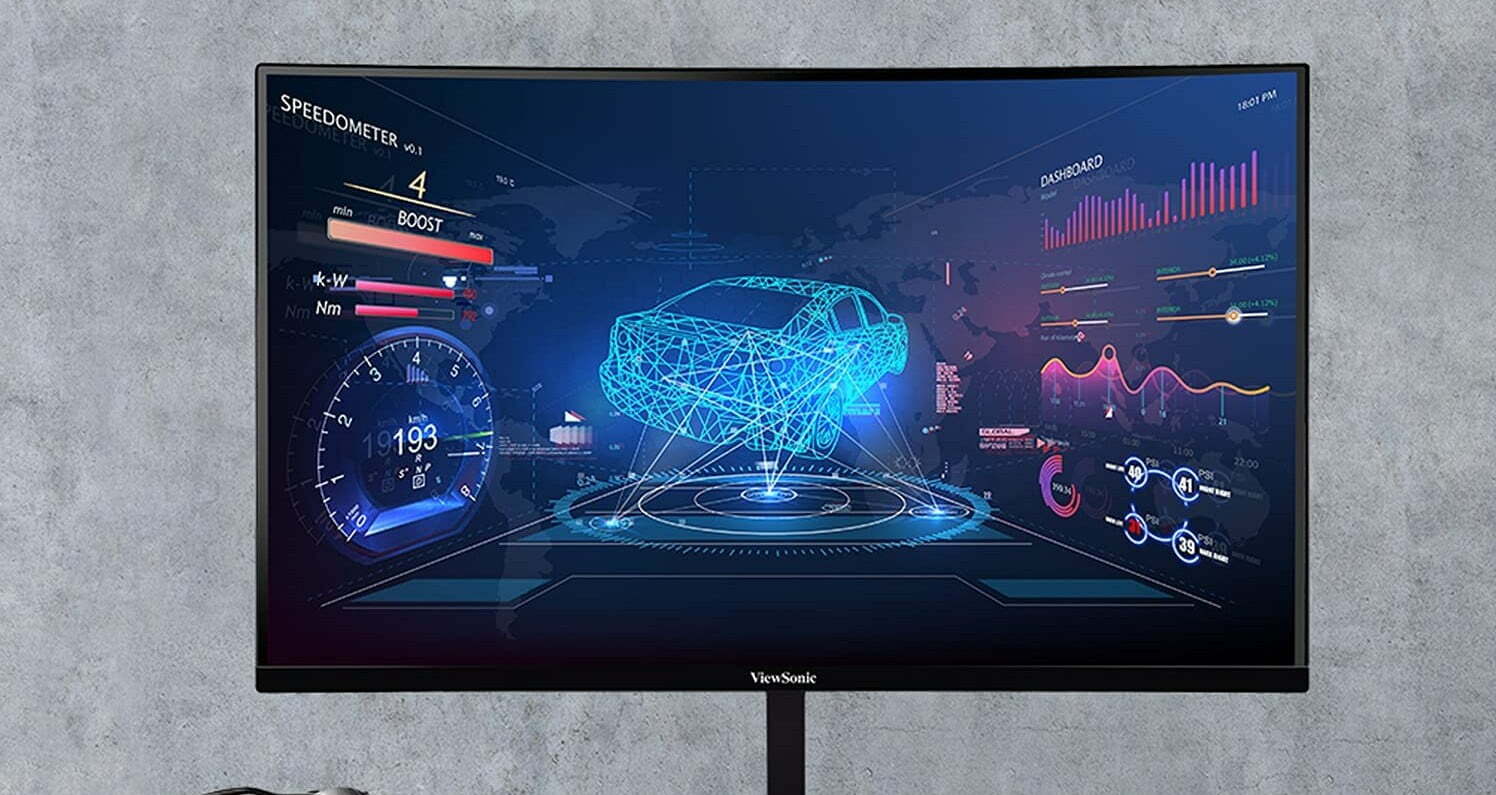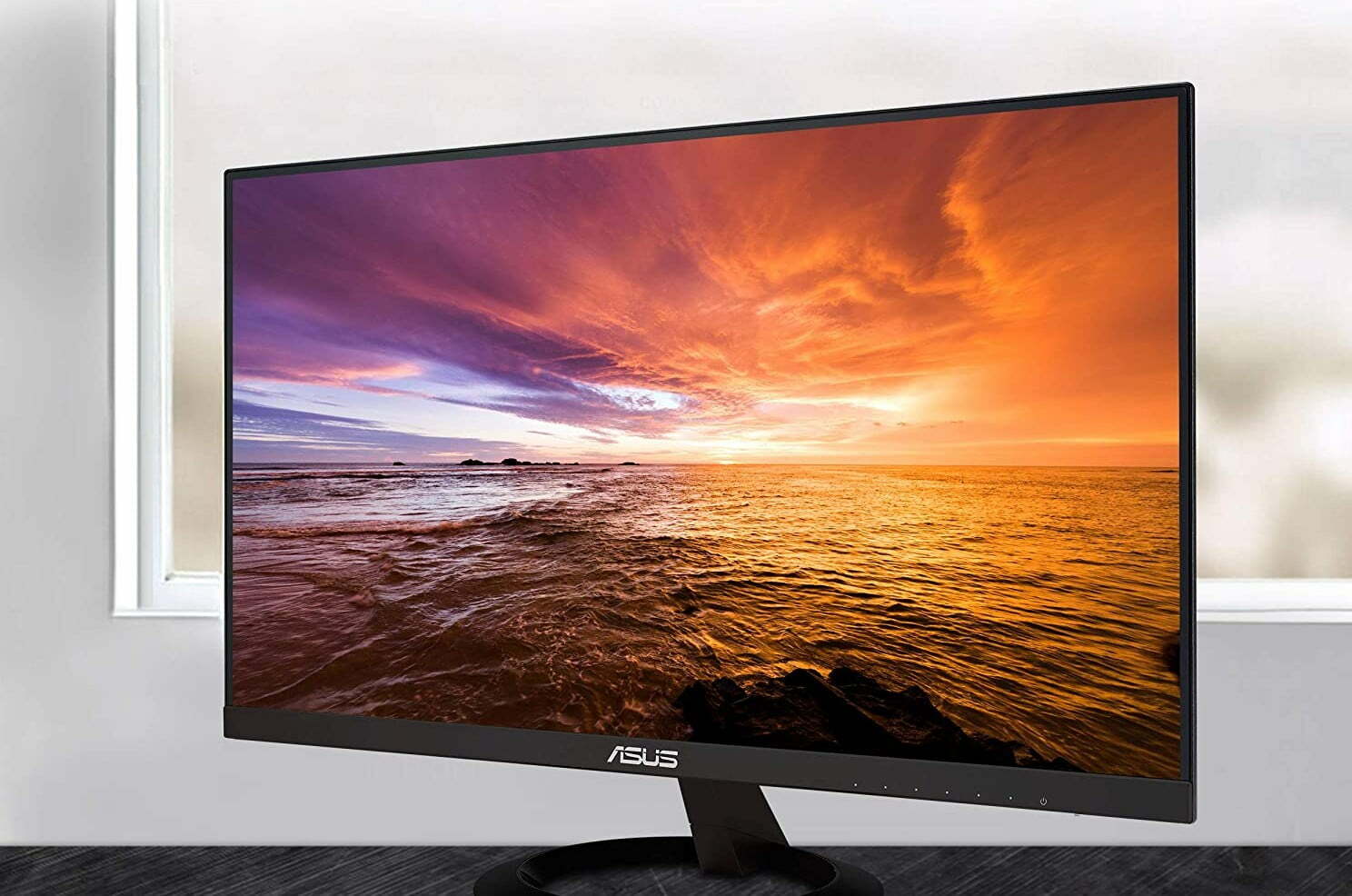If you are shopping for a brand new display, you may be comparing two monitors vs an ultrawide monitor to find the right monitor for flight simulator games. Even the best computer monitors, after all, could always use a boost in screen real estate. Keep reading to learn more about these two display options.
KEY TAKEAWAYS:
- A dual monitor setup typically features a slight gap between the two displays, which may be off-putting to some. Although, the benefits of dual monitors are the best.
- An ultrawide screen eliminates this gap and excels at playing cinematic content at its preferred 21:9 monitor aspect ratio, whereas regular monitors may be tied to a 16:9 aspect ratio.
- Two monitors may be the preferred choice for multitaskers, as you can set up a single screen as a secondary monitor, with a vertical orientation for coding and the like. This is why you’ll need the best dual monitor stand to remain productive.
Although, some people may find that instead of dual monitors, three monitors might be the better choice for enhancing productivity. With more monitors, there’s more to take care of though, like troubleshooting issues such as your third monitor not being detected by the PC.
Differences Between Two Monitors and an Ultrawide Monitor
Well, the most obvious difference here is that a dual-monitor setup includes two computer monitors, whereas an ultrawide monitor is just one, which is why you’ll definitely want the leading ultrawide gaming monitor. Choosing a dual-monitor installation has its own pros and cons, as does going for an ultrawide setup. But, an ultrawide would be a great monitor for streaming. Some of these contrasts will be subtle, others stark, such as when you are comparing a computer monitor vs a television.
Here are some differences between using two monitors or one ultrawide display.
Insider Tip
Make sure your monitors offer identical resolutions if you opt for a dual-display setup. One of the models having a different resolution versus the other in your dual-screen setup can be distracting and affect performance of different tasks as well.
Gap Between Monitors
Though using dual monitors is a great way to extend your overall screen real estate, there will be the dreaded gap between the two monitors. This may not always be a deal-breaker, as modern displays feature ultra-slim bezels, but could be annoying when using older monitors. An ultrawide monitor, on the other hand, will feature no gap whatsoever, though one ultrawide, no matter how large, will not usually offer more real estate than two dedicated, top business monitors.
Cinematic Aspect Ratio
An ultrawide monitor is usually purpose-built to handle a 21:9 aspect ratio, making it shine while watching movies and other streaming content. 21:9, after all, is how most movies are filmed and how they are meant to be viewed. In other words, you won’t see any letterboxes. You can ape a 21:9 format with two monitors, but it will not always work and will encounter the occasional error and may require letterboxes to watch some content.
Instead of dealing with the hassle of two monitors or a 21:9 aspect ratio, just go with the Samsung CHG90 49-inch curved ultrawide monitor instead.
Multitasking
Many professionals opt for a dual monitor setup for multitasking. You can set one monitor to display a certain window, while another window is shown on the other monitor. This is difficult to pull off using a single ultrawide monitor. Additionally, you can even switch the orientations between the two monitors, having one standup vertical. This is the preferred setup for computer programmers, as the vertical monitor will be used for coding and reading code, while the horizontally placed monitor will be used to test the result of said coding.
Cost
This is somewhat of a draw, as ultrawide monitors tend to be slightly more expensive than traditional displays. In other words, it may cost a bit more to buy two monitors as opposed to one, but it will not be significantly more expensive than using a single ultrawide display. However, to maximize enjoyment while using a dual monitor setup, it is always a good idea to buy two of the exact same monitor, so you may have to wait for a deal before making the plunge. You may have to stay on top of any errors like a second monitor not detected issue, but there are resources available to troubleshoot these errors.
Placement
Of course, two monitors will require more desk space and more room than a single display, even an ultrawide. Make sure you have the deskspace ahead of time and that you have plenty of room to make necessary adjustments to your dual monitor setup. An ultrawide may need some more room to accommodate the width, but the base should be around the same size as any single monitor. You will also need to think about chair placement and the ideal spot to sit for an optimum viewing angle.
Simplicity
It will be much simpler and easier to get an ultrawide monitor going than it will be to set up two different monitors. The latter requires a PC with multiple display ports, for one, and you may have to perform some deep settings fiddling to get everything to work. An ultrawide monitor, on the other hand, will be a plug-and-play affair with a setup process no different from any other display.
F.A.Q.S
What is the best size for an ultrawide monitor?
This depends on personal preference and what you are looking for. If you are going for an immersive experience, such as an immersive gaming experience, you may want a larger screen size than if you are just surfing the web.
Ultrawide vs dual monitors: Which are better for productivity?
A widescreen monitor is decent for productivity, but in most cases, a multi-monitor setup will be the preferred choice. This goes for audio editing and related professions.
Why are ultrawides so popular?
An ultrawide screen is a go-to choice for watching cinematic content and for increased immersion while gaming, especially if it is a curved monitor.
STAT: 4:3 was the aspect ratio used by 35 mm silent films. By having televisions match this aspect ratio, movies originally filmed in 4:3 could be satisfactorily viewed on standard-definition television (SDTV). (source)
REFERENCES:
- https://www.dell.com/community/XPS/2-external-vs-single-ultrawide-display/td-p/7801038
- https://en.wikipedia.org/wiki/Ultrawide_formats
- https://www.osapublishing.org/jdt/abstract.cfm?uri=jdt-1-1-3r
- https://www.sciencedirect.com/science/article/abs/pii/S0895435614002376
- https://www.jstage.jst.go.jp/article/jpts/26/11/26_jpts-2014-196/_article/-char/ja/



































![Best 27 Inch Computer Monitor in [year] 27 Best 27 Inch Computer Monitor in 2026](https://www.gadgetreview.dev/wp-content/uploads/how-to-buy-the-best-computer-monitor.jpg)
![Best BenQ Monitors in [year] 28 Best BenQ Monitors in 2026](https://www.gadgetreview.dev/wp-content/uploads/best-benq-monitor-image.jpg)
![Best ASUS Monitors in [year] 29 Best ASUS Monitors in 2026](https://www.gadgetreview.dev/wp-content/uploads/best-asus-monitor-image.jpg)
![Best Dell Monitors in [year] 30 Best Dell Monitors in 2026](https://www.gadgetreview.dev/wp-content/uploads/best-dell-monitor-image.jpg)
![Best HP Monitors in [year] 31 Best HP Monitors in 2026](https://www.gadgetreview.dev/wp-content/uploads/best-hp-monitor-image.jpg)
![Best Lenovo Monitors in [year] 32 Best Lenovo Monitors in 2026](https://www.gadgetreview.dev/wp-content/uploads/best-lenovo-monitor-image.jpg)
![Best ViewSonic Monitors in [year] 33 Best ViewSonic Monitors in 2026](https://www.gadgetreview.dev/wp-content/uploads/best-viewsonic-monitor-image.jpg)
![Best Gigabyte Monitors in [year] 34 Best Gigabyte Monitors in 2026](https://www.gadgetreview.dev/wp-content/uploads/best-gigabyte-monitor-image.jpg)
![Best Monitors for PS4 Pro Gaming in [year] 35 Best Monitors for PS4 Pro Gaming in 2026](https://www.gadgetreview.dev/wp-content/uploads/best-monitors-for-ps4-pro-image.jpg)
![Best Monitor for Xbox Series X in [year] 36 Best Monitor for Xbox Series X in 2026](https://www.gadgetreview.dev/wp-content/uploads/best-monitor-for-xbox-series-x-image.jpg)
![Best Acer Monitors in [year] 37 Best Acer Monitors in 2026](https://www.gadgetreview.dev/wp-content/uploads/best-acer-monitor-image.jpg)
![Best MSI Monitors in [year] 38 Best MSI Monitors in 2026](https://www.gadgetreview.dev/wp-content/uploads/best-msi-monitor-image.jpg)
![Best SAMSUNG Monitors in [year] 39 Best SAMSUNG Monitors in 2026](https://www.gadgetreview.dev/wp-content/uploads/best-samsung-monitor-image.jpg)
![Best LG Monitors in [year] 40 Best LG Monitors in 2026](https://www.gadgetreview.dev/wp-content/uploads/best-lg-monitor-image.jpg)
![Best AOC Monitors in [year] 41 Best AOC Monitors in 2026](https://www.gadgetreview.dev/wp-content/uploads/best-aoc-monitor-image.jpg)
![Best Philips Monitors in [year] 42 Best Philips Monitors in 2026](https://www.gadgetreview.dev/wp-content/uploads/best-philips-monitors-image.jpg)
![Best Monitors For PUBG in [year] 43 Best Monitors For PUBG in 2026](https://www.gadgetreview.dev/wp-content/uploads/best-monitor-for-pubg-image.jpg)
![Best Stream Decks in [year] 44 Best Stream Decks in 2026](https://www.gadgetreview.dev/wp-content/uploads/best-stream-deck-image.jpg)
![Best Monitors for Streaming in [year] 45 Best Monitors for Streaming in 2026](https://www.gadgetreview.dev/wp-content/uploads/best-monitor-for-streaming-image.jpg)
![Best Monitors For Flight Simulator in [year] 46 Best Monitors For Flight Simulator in 2026](https://www.gadgetreview.dev/wp-content/uploads/best-monitor-for-flight-simulator-image.jpg)




















